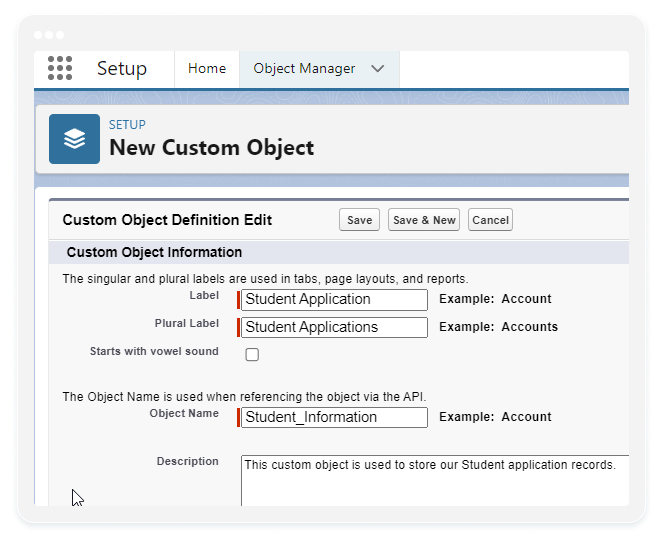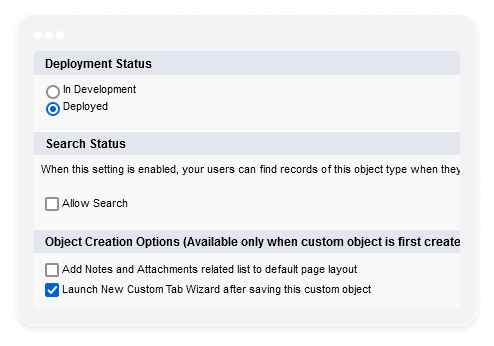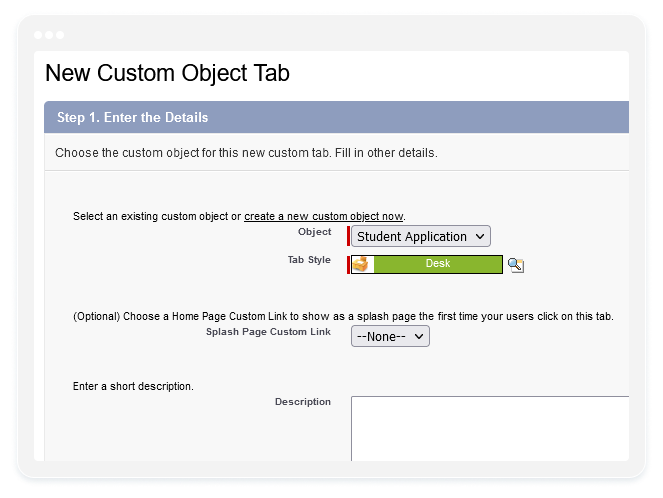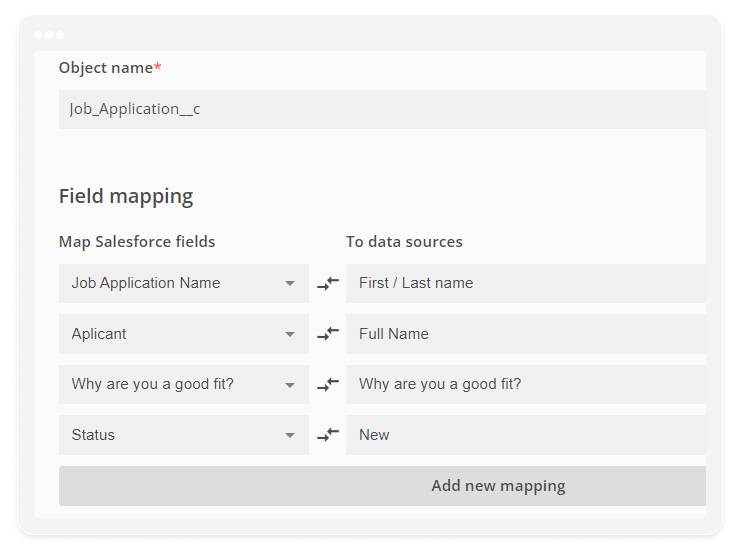What are custom objects in Salesforce
Unlock the power of custom objects in Salesforce with our comprehensive guide! Learn about the differences between standard and custom objects, understand when custom objects are preferred, and discover how to create your first custom object step-by-step. Plus, streamline your data operations by integrating Salesforce with 123FormBuilder for seamless form submission management. Let’s dive in and supercharge your Salesforce experience!
Custom objects vs Standard Objects
Standard objects in Salesforce, such as Accounts, Contacts, and Opportunities, come predefined, providing fundamental functionality and seamless integration capabilities. These standard entities are effortlessly configured and commonly utilized across the Salesforce ecosystem, making them easily recognizable and widely employed.
Conversely, custom objects are tailored by users to align with unique business workflows or data needs. Unlike standard objects, which come predefined, custom objects offer the flexibility to design structures that cater specifically to individual organizational requirements or specialized processes.
When are custom objects preferred?
Custom objects are preferred in Salesforce when organizations have specific business requirements that cannot be addressed using standard objects.
Here are some scenarios where custom objects are often preferred:
- Unique Data Model: When organizations have unique data structures that do not fit well into the standard Salesforce objects like Accounts, Contacts, or Opportunities.
- Flexibility: Custom objects allow organizations to define data structures tailored to their specific requirements.
- Relationships: Custom objects can establish relationships with other objects, including standard and custom ones.
- Automation: Custom objects support the implementation of custom automation processes using workflows, process builder, or Apex code.
- Reporting and Analytics: Custom objects can be included in Salesforce reports and dashboards, providing insights into custom data sets and business processes.
- Integrations: Custom objects can be integrated with external systems using Salesforce APIs, such as REST or SOAP APIs.
How to create your first custom object?
- Log in to your Salesforce account.
- Go to the upper-right corner and select “Setup”.
- In the Quick find field, type “Object Manager“, and select it from the results.
- On the Object Manager page, click “Create” at the top right, then select “Custom Object”.
- Fill in the Label, Plural Label, and Object Name fields with the name of your Custom Object.
- The Record Name field will be automatically filled for you.

Under Object Creation Options tick Launch New Custom Tab Wizard. You won’t be able to find your custom object in Salesforce if there’s not a tab created with it.

Proceed with the following steps to save your custom tab:

Press the save button and congratulations you’ve now created your first custom object.
After creating your custom object, you can customize it by adding standard or custom fields to each record.
Streamlining Data Operations: Salesforce Integration with 123FormBuilder
123FormBuilder empowers individuals and organizations to design a wide range of data collection tools, including custom forms, surveys, and quizzes, all without requiring advanced technical skills. Its user-friendly interface and extensive customization options ensure that forms can be tailored precisely to meet the unique needs of any business or project.
Once integrated with Salesforce, the real magic happens. The integration automates the process of transferring form submissions directly into Salesforce records. This means that data collected through 123FormBuilder forms can seamlessly create new records or update existing ones within the Salesforce platform. As a result, organizations can enjoy enhanced efficiency and accuracy in their data management processes, all while eliminating the tedious task of manual data entry. With Salesforce Integration, 123FormBuilder becomes an indispensable tool for optimizing data operations and driving productivity.
All you need to do is select your Salesforce Custom or Standard Object and seamlessly map your Salesforce fields with the corresponding fields on your form:

In summary, custom objects offer tailored solutions in Salesforce, empowering organizations with flexibility, automation, and insights. Integrated with tools like 123FormBuilder, they streamline data operations for enhanced efficiency and adaptability, maximizing the value of Salesforce investments.

